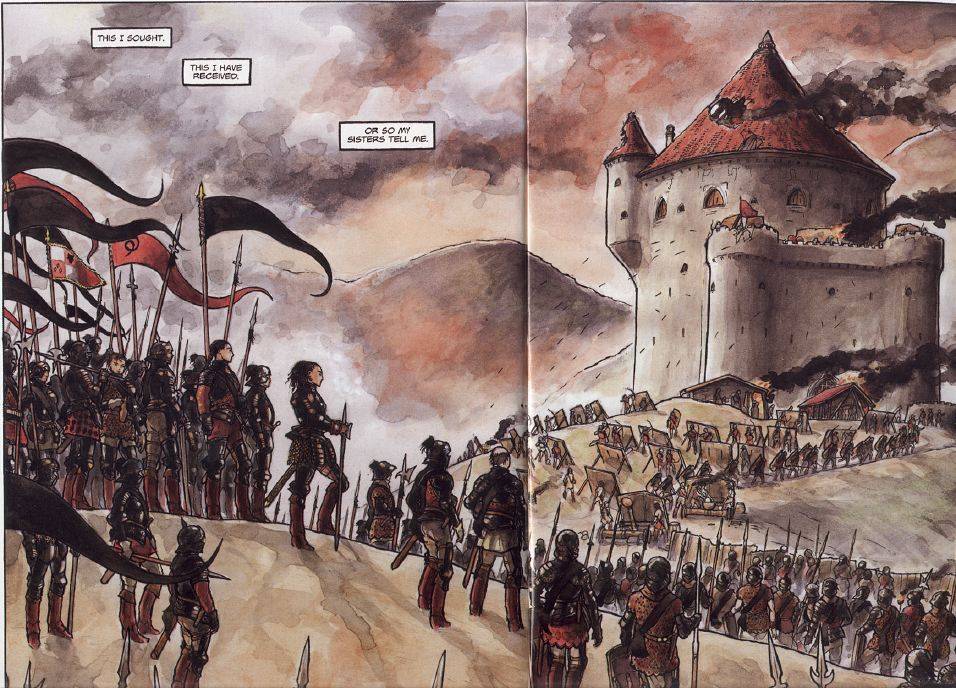Artesia
by Mark Smylie
Sirius, TPB, © 1999
Reviewed August 2000
 Artesia is a serious fantasy-adventure series which has apparently been going on for a few years now, although I've only just recently discovered it. This volume reprints the original six-issue series, and since then there's been an Annual, and two issues of a new series, Artesia Afield.
Artesia is a serious fantasy-adventure series which has apparently been going on for a few years now, although I've only just recently discovered it. This volume reprints the original six-issue series, and since then there's been an Annual, and two issues of a new series, Artesia Afield.
Artesia is the one-time concubine of King Branimir of the highlands castle of Dara Dess. Somewhere along the way she also became an officer in his army, and has risen to become the captain of his entire militia of hundreds of men and women. Artesia is recognized as being able to talk to spirits, and having a special connection to the goddess Yhera, which helps explain (to some others) her military ability. Naturally, Bran eventually becomes nervous about her position and resolves to do away with her.
This collection is about Artesia's position in her nation, and how she deals with Bran's turning against her. And, midway through the book, she learns that the long-dormant Thessid-Golan Empire to the south is invading the middle kingdoms, which border on the highlands which Artesia roams. (This plot thread sets the stage for the next series; this one is mainly concerned with Artesia's domestic conflicts.)
Artesia is not a light story: Although a concubine, Artesia is a warrior, wears real armor and fights alongside those she commands, and holds friendship and comradeship dearly. The book contains both nudity and graphic violence, as you'd expect given its subject matter. And, Artesia clearly does have the ear of the gods, as there are elements of magic and mysticism which affect the real world, although they are usually presented (aside from occasional visions) in a low-key manner.
The story naturally feels unfinished, since this is the first part of a larger arc. The characters of Artesia and her friends are only briefly examined, and the motivations of most (save for Artesia's natural motivations of self-preservation and friendship) are often murky. It's plot-driven, character-light. This might change over the course of future series.
The biggest selling point for Artesia is Smylie's impressive artwork: Pen-and-inks with coloring that looks like water color. His layouts vary from complex to sparse. His figures are well-designed and painstakingly rendered, though I sometimes wish his backgrounds had more detail. His use of color is striking, as the mood of a scene dictates (and/or is augmented by) the palette which Smylie uses. Overall, it's a beautiful-looking book. Below is part of a two-page spread from the sixth issue.
Although I wouldn't give this my highest rating, there's a lot to like about Artesia and it's very different from most other comics being published today.

hits since 26 August 2000.
|



